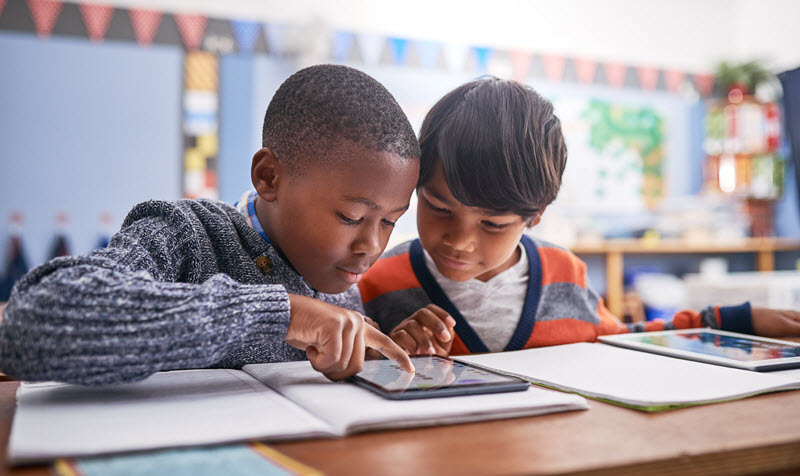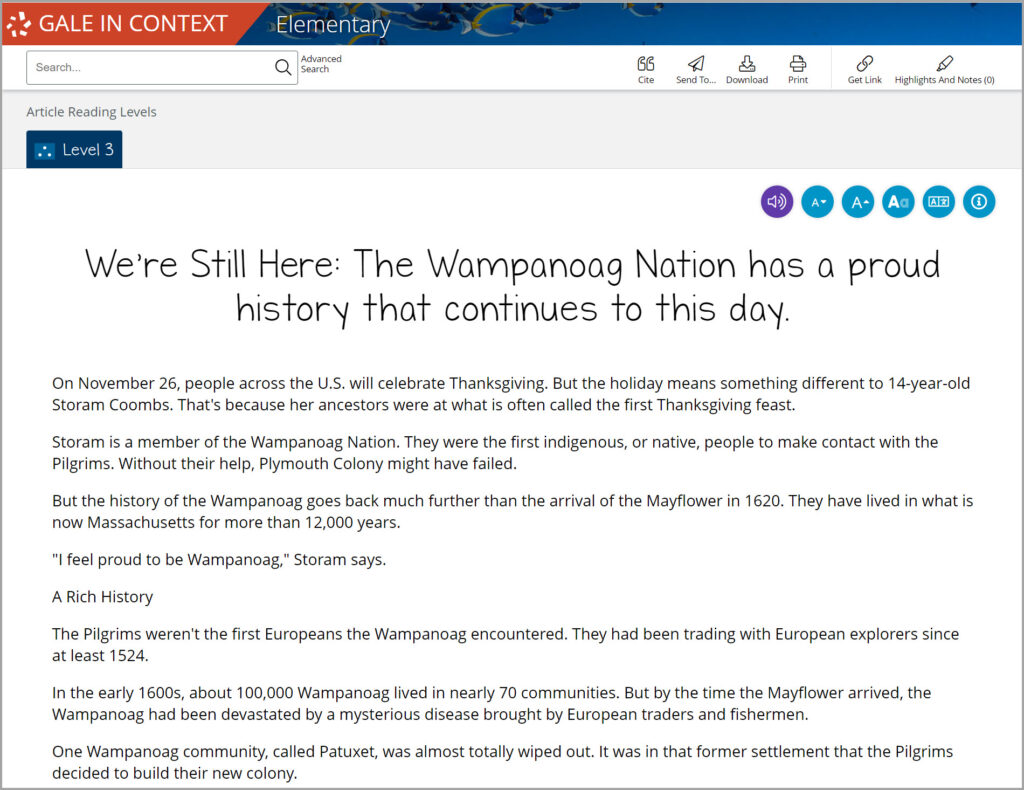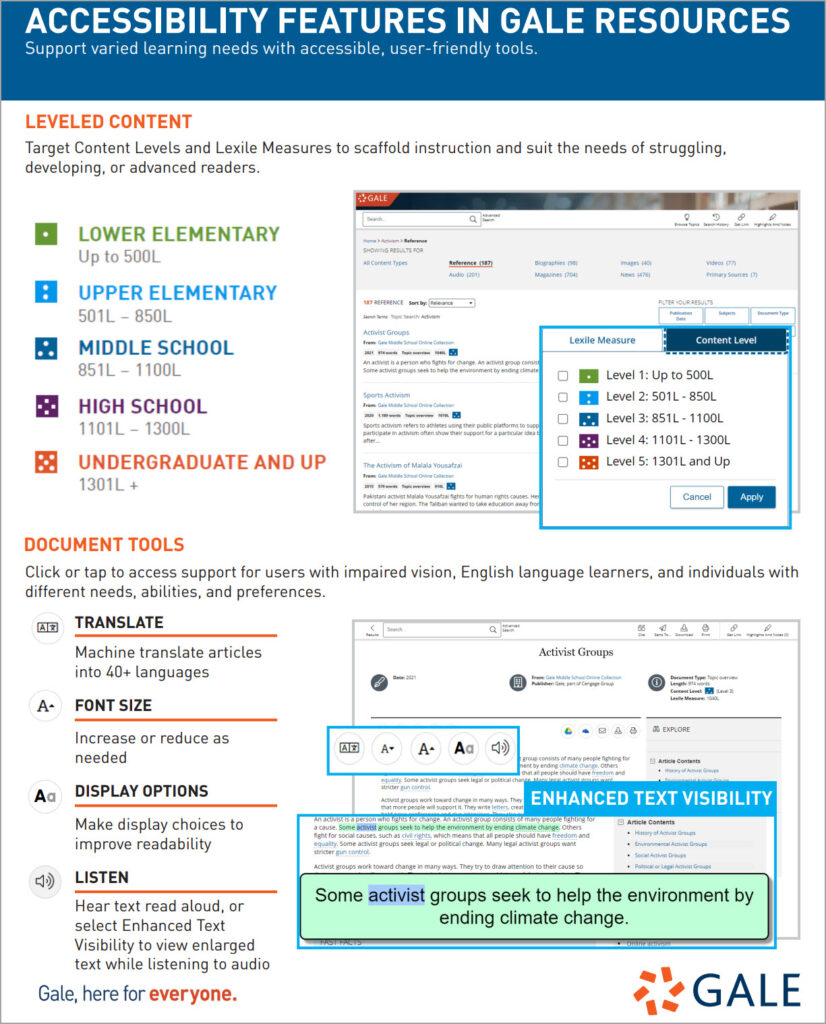| By Gale Staff |
Diversity in the classroom is undeniably valuable. Students who learn and grow alongside people from different backgrounds become more empathetic and successful working adults. But the word “inclusivity” takes that idea a step further. Global diversity and inclusion strategist Andrés Tapia famously said, “Diversity is a mix, and inclusion is making the mix work.” A classroom can represent children from various racial, religious, neurodiverse, and socioeconomic backgrounds. The teacher helps make the mix work.
As schools embark on a new academic year, teachers can develop strategies for more inclusive classroom communities. The fall semester provides an exciting framework for elementary students to study and celebrate different religious and cultural approaches to the various holidays while still enjoying and sharing their personal family traditions.
Educators can rely on the Gale In Context: Elementary database for accurate, unbiased content appropriate for children. Gale’s user-friendly tools and diverse collection inspires curiosity in the classroom and aids students in developing their beginner research skills. As you prepare your holiday season lesson plans, leverage Gale In Context: Elementary content to share and integrate new perspectives on popular U.S. traditions.
Teach the History of Halloween
Halloween is not an exclusively American holiday. As your young learners excitedly plan for their costumes and candy swaps, build in a fascinating lesson about the history and folklore around Halloween. Historians trace the holiday’s roots to ancient civilizations. More than 2,000 years ago, Celtic tribes throughout the United Kingdom, Ireland, and northwestern France celebrated the end of the harvest season on Samhain, meaning “summer’s end,” the last night of October.

With the often deadly winter months around the corner, people believed that the veil between the living and the dead was especially thin during this time of year. As the nights grew darker, people hollowed out and placed candles inside root vegetables like beets, turnips, rutabagas, and even potatoes, thus creating the original jack-o-lanterns. They would even carve grotesque faces on the vegetables to frighten away any rogue spirits.
Similar traditions appeared thousands of miles away in South America, where people still celebrate the Day of the Dead on November 1. In Mexico, families visit cemeteries, host elaborate festivals, and craft colorful sugar skulls. Conversely, the Catholic Church observes All Saints Day, during which people gather at church, light candles, and share a special meal with family. Today, for modern Western Halloween, children visit pumpkin patches, carve jack-o-lanterns, and visit their neighbor’s homes for candy. Over thousands of years, cultures worldwide have celebrated the end of the fall season and prepared for winter in different yet often similar ways.
Discussion Idea: As your class studies the history and various celebrations for Halloween around the world, ask students to work together and create a list of the similarities they find. For example, carving root vegetables, celebrating the harvest, eating sweets, and building bonfires are pervasive holiday symbols and traditions across many cultures. Help students learn to identify and value the customs people share rather than fixate on the differences.
Allow Students to Study New Approaches to Thanksgiving
Americans are familiar with the traditional story of Thanksgiving—in 1621, early Puritan settlers and members of the native Wampanoag tribe prepared and shared an elaborate meal together to celebrate a successful harvest. It’s a story of peace and prosperity, often represented by pilgrims sporting belt-buckled hats and Native Americans wearing elaborate headdresses.
In truth, the modern retelling of the first Thanksgiving is predominantly inaccurate. In fact, the early 17th-century feast between the Puritans and Wampanoag people may not have even been the original celebration. There was likely no roast turkey, and there was definitely no pumpkin pie. Plus, the harvest in 1621 was less abundant than the retelling suggests—the second celebration in 1623 was far more prosperous.
In light of these common myths, teachers could offer a new perspective on the Thanksgiving holiday, opening a dialogue around how the Native people were critical to establishing early colonial communities. The Native Americans knew how to survive the cold New England winters and showed the struggling Puritan communities how to plant a successful harvest. The peace between the two communities that the First Thanksgiving commemorates was short-lived. Today, the Wampanoag descendants view the holiday as a reminder of later colonist betrayal and violence.
Discussion Idea: Build a lesson plan that tackles some common misconceptions around Thanksgiving. Encourage students to consider why Americans popularize specific perspectives over others. Conversations, such as those about the vital role that Native Americans played, are left out. Create a dialogue around the ways that history can change depending on who is telling the story.
Rely on Gale’s Inclusivity Tools
Alongside the extensive content housed in Gale In Context: Elementary, Gale products feature strategic tools and customizations to improve classroom accessibility. To create a more inclusive community, one must make learning spaces welcoming, regardless of a student’s language, reading level, or learning style.
Users can translate articles into dozens of languages or download content into audio files. For those with visual or learning disabilities, you can adjust each article’s font size, color, type, and spacing. Plus, students can switch content between reading levels. These user-friendly tools help students customize their learning, which leads to more confidence within academic spaces.
Teachers eager to leverage Gale In Context: Elementary can also turn to Gale In Context: For Educators. With professional development webinars, collaboration tools, and ready-made lesson plans, this educator-specific resource helps you save time. In turn, you’ll be more available to support the differentiated learning needs of your individual students. As a result, students from diverse backgrounds and those who require more one-on-one support can become more engaged learners.
Introducing new perspectives and building more inclusive classrooms takes time and effort. With Gale’s collections, teachers can spend fewer hours finding and vetting resources and instead develop creative and new approaches to any topic, no matter the time of year. If your school is not a subscriber, contact your local Gale representative to learn more about our products and access a trial session.



